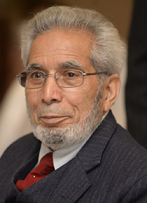
MSK Blog
After the Storm: Make Your Disaster Relief Donations Count
By Saghir A. Aslam
Rawalpindi, Pakistan

(The following information is provided solely to educate the Muslim community about investing and financial planning. It is hoped that the ummah will benefit from this effort through greater financial empowerment, enabling the community to live securely with dignity and fulfill their religious and moral obligations towards charitable activities)
1. Supporting Disaster Relief Organizations: The American Red Cross Example: Many Americans prioritize supporting organizations that offer aid in the aftermath of disasters. The American Red Cross serves as a notable example, receiving over $830 million in donations during its 2022 fiscal year. This substantial generosity enabled the organization to respond to 354 large-scale disaster operations, marking a 4% increase from the previous year. The relief efforts extended to more than 220,000 homes affected by events like Hurricane Ida and wildfires in western states.
2. Targeted and Local Support beyond National Organizations
In today's information age, donors have the flexibility to support not only national organizations but also targeted and local initiatives. Constant media coverage after disasters enhances awareness, allowing individual donors to be more effective in addressing specific community needs, as highlighted by Deborah P. Lauer, Senior Wealth Planner at Wells Fargo Advisors.
3. Integrating Philanthropy into Long-Term InvestmentPlans
Building giving into a long-term investment plan is emphasized as a powerful way to help others. Lauer suggests developing deliberate philanthropic goals that align with overall investment strategies. Creating an annual giving budget, responsive to events like Hurricane Idalia, proves to be an efficient approach for both victims' recovery and personal financial strategy.
4. Strategic Giving Throughout the Year
Recognizing the powerful urge to help, Lauer advises families to manage philanthropy as part of their general budget. Giving throughout the year, rather than focusing solely on year-end donations, can alleviate budget pressures, especially during holiday-related expenses. Strategies like donating appreciated securities are highlighted for their tax-efficient benefits.
5. Organizing Charitable Giving within Financial Strategies
Incorporating charitable giving into an overall financial strategy is recommended. Setting a total for annual charitable giving at the beginning of the year, based on budget and preferred causes, ensures deliberate and consistent support. Lauer emphasizes the importance of leaving resources aside for sudden catastrophes, providing flexibility in donation timing.
6. Due Diligence in Charitable Contributions
After identifying beneficiary organizations, donors are encouraged to conduct due diligence. The Internal Revenue Service offers resources like the EO Select Check database, verifying organizations designated as qualified charities. Review sites such as Charity Navigator and Charity Watch can also guide donors in evaluating how efficiently donations are managed.
7. Complexities of Giving Abroad
The text explores the complexities of donating to disaster relief efforts abroad. Foreign charitable donations are generally not deductible for US federal income tax purposes. To navigate this, the suggestion is to donate to domestic charitable organizations with foreign partners actively engaged in disaster relief. Guidelines on international donations can be found on the IRS website.
8. Making Contributions throughout the Year
Emphasizing the importance of ongoing contributions, the text concludes by highlighting how consistent support throughout the year ensures availability when needed the most. Making generosity an integrated part of one's financial strategy reflects a thoughtful and sustained commitment to supporting charities and disaster victims.
(Saghir A. Aslam only explains strategies and formulas that he has been using. He is merely providing information, and NO ADVICE is given. Mr Aslam does not endorse or recommend any broker, brokerage firm, or any investment at all, nor does he suggest that anyone will earn a profit when or if they purchase stocks, bonds, or any other investments. All stocks or investment vehicles mentioned are for illustrative purposes only. Mr Aslam is not an attorney, accountant, real estate broker, stockbroker, investment advisor, or certified financial planner. Mr Aslam does not have anything for sale.)

